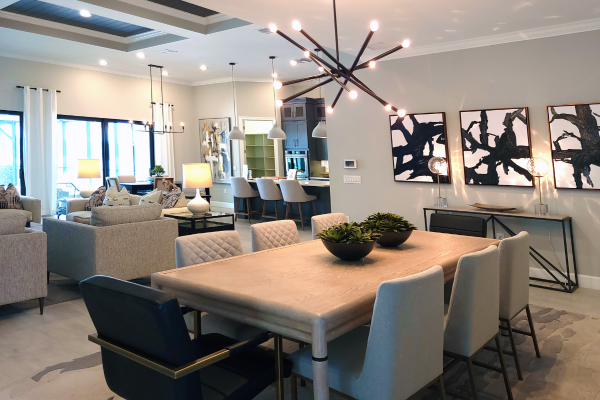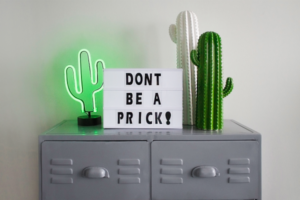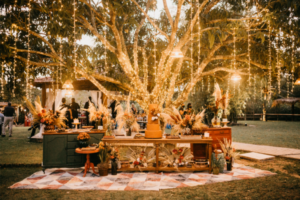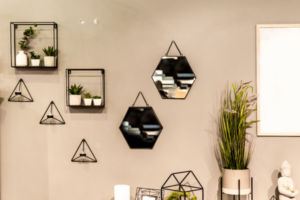Interior design is more than just arranging furniture and selecting paint colors; it’s a form of art that involves creating functional and aesthetically pleasing spaces. Whether you’re designing a new home, renovating an existing one, or simply looking to refresh a room, the journey from concept to creation can be both exciting and challenging. The key to a successful interior design project lies in finding inspiration that resonates with you and guides your creative process. In this article, we will explore the importance of inspiration in interior design and provide you with practical tips on how to discover and harness it effectively.
The Role of Inspiration in Interior Design
Inspiration serves as the foundation for any creative endeavor, and interior design is no exception. It is the spark that ignites the entire design process, influencing choices related to color, texture, furniture, and layout. Here are some reasons why inspiration is crucial in interior design:
1. Personalization
Interior design allows you to transform a space into a reflection of your personality and lifestyle. Inspiration acts as a guide to help you make choices that resonate with your tastes and preferences. It ensures that your design is not only visually appealing but also deeply personal.
2. Cohesion
A well-designed space is cohesive, with all its elements working harmoniously together. Inspiration helps you create a consistent and unified look by providing a central theme or concept that ties everything together. Without a clear source of inspiration, your design may appear disjointed or haphazard.
3. Creativity
Interior design is a creative endeavor that involves problem-solving and innovation. Inspiration fuels your creativity and allows you to think outside the box. It encourages you to explore unique design elements and experiment with different ideas.
4. Overcoming Challenges
Designing a space often comes with challenges, such as limited budgets, small square footage, or architectural constraints. Inspiration can help you find creative solutions to these challenges and turn limitations into opportunities.
Finding Your Interior Design Inspiration
Now that we understand the importance of inspiration in interior design, the next question is: Where can you find it? Inspiration can come from various sources, and it often strikes when you least expect it. However, you can take proactive steps to discover and harness your design inspiration:
1. Nature
Nature has been a timeless source of inspiration for designers across various disciplines. The colors, patterns, and textures found in the natural world can serve as a rich palette for your interior design project. Consider taking a walk in the park, visiting botanical gardens, or even studying the intricate details of a seashell to find inspiration for your space.
2. Art and Culture
Art and culture are excellent sources of inspiration, offering a wealth of ideas for color schemes, patterns, and design motifs. Visit museums, art galleries, or cultural events to immerse yourself in different artistic styles and cultural traditions. You can draw inspiration from a particular art movement, a famous painting, or even a cultural celebration.
3. Travel
Traveling to different places allows you to experience diverse architectural styles and interior design trends. Whether it’s the minimalism of Scandinavian design, the opulence of French interiors, or the rustic charm of a countryside cottage, travel can open your eyes to new possibilities. Take photographs and notes during your travels to reference later in your design process.
4. Magazines and Books
Interior design magazines and books are treasure troves of inspiration. They feature real-life projects, expert advice, and the latest design trends. Flip through design magazines, explore coffee table books on interior design, and bookmark or tear out pages that resonate with you. These physical references can serve as visual cues during your design journey.
5. Online Resources
The internet offers a vast array of online resources dedicated to interior design inspiration. Platforms like Pinterest, Instagram, and Houzz are brimming with interior design ideas and images. Create digital mood boards or collections of your favorite designs to help you visualize your own project.
6. Personal Experiences
Sometimes, your own experiences and memories can be a powerful source of inspiration. Think about places or moments in your life that have left a lasting impression. It could be a childhood vacation home, a cozy cafe you frequented, or a cherished heirloom. Drawing from your personal experiences can infuse your design with authenticity and sentimental value.
7. Collaborative Brainstorming
Don’t underestimate the power of collaboration when seeking inspiration. Discuss your design project with friends, family, or a professional interior designer. Brainstorming sessions can yield fresh ideas and perspectives that you might not have considered on your own.
Harnessing Your Inspiration in the Design Process
Once you’ve found your interior design inspiration, the next step is to harness it effectively throughout the design process. Here are some practical tips to help you do just that:
1. Create a Mood Board
Compile all your sources of inspiration into a physical or digital mood board. Include images, color swatches, fabric samples, and any other elements that capture the essence of your design concept. A mood board serves as a visual reference and a source of inspiration throughout the project.
2. Define Your Design Concept
Based on your inspiration, define a clear design concept or theme for your space. This concept will act as your guiding principle, influencing every decision you make regarding furniture, decor, and layout. Whether it’s “coastal retreat,” “industrial chic,” or “vintage elegance,” a well-defined concept ensures a cohesive design.
3. Set Priorities
Not all aspects of your design can be equally emphasized. Determine what elements from your inspiration are most important to you and prioritize them. This will help you allocate your budget and resources effectively, ensuring that the key aspects of your design shine.
4. Consult with Professionals
If you’re feeling overwhelmed or uncertain about how to translate your inspiration into a tangible design, consider consulting with a professional interior designer. They can help you refine your ideas, make practical suggestions, and bring your vision to life while staying within your budget.
5. Flexibility and Adaptability
While inspiration is a valuable starting point, be open to adjustments and adaptations as your project progresses. Sometimes, practical constraints or unexpected discoveries may lead you in new and exciting directions. Embrace these opportunities for growth and innovation.
6. Stay Organized
Maintain a well-organized design journal or folder where you document your design decisions, product selections, and project timelines. Keeping everything in one place will help you stay on track and ensure that your design remains true to your inspiration.
Conclusion
Interior design is a deeply personal and creative journey that begins with finding inspiration. Whether it’s drawn from nature, art, travel, or personal experiences, your inspiration is the guiding force that shapes your design concept and influences your choices throughout the process. By actively seeking and harnessing your inspiration, you can transform your living spaces into unique and meaningful environments that reflect your style and personality. So, embark on your interior design adventure with an open mind, a keen eye, and a heart full of inspiration, and watch as your vision comes to life.



